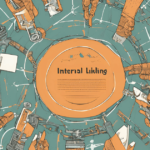Have you ever wondered why some images seem to magically appear in search results while others remain hidden in the depths of the internet? The secret lies in a small but mighty HTML attribute: alt text.
In today’s visually-driven digital landscape, images play a crucial role in capturing attention and conveying information. But what happens when search engines can’t “see” these images? That’s where alt text comes in. By crafting SEO-friendly alt text, you can unlock the full potential of your images, boost your website’s visibility, and create a more inclusive online experience for all users.
In this comprehensive guide, we’ll dive deep into the world of alt text optimization. From understanding its importance to mastering the art of writing effective descriptions, we’ll cover everything you need to know to elevate your image SEO game. Get ready to discover the key elements, best practices, and common pitfalls of alt text writing, along with powerful tools and techniques to measure your success. Let’s embark on this journey to transform your images into SEO powerhouses!
Understanding Alt Text and Its SEO Importance
A. Definition of alt text
Alt text, short for alternative text, is a brief description of an image that appears when the image fails to load or when a user is using a screen reader. It serves as a textual replacement for visual content, providing context and meaning to images on web pages.
B. How search engines use alt text
Search engines rely heavily on alt text to understand and index image content. Here’s how they utilize it:
- Image indexing: Alt text helps search engines categorize and rank images in image search results
- Contextual understanding: It provides additional context to the page content, improving overall relevance
- Keyword association: Well-crafted alt text can associate relevant keywords with images
| Search Engine | Alt Text Usage |
| Indexes for image search, factors in page ranking | |
| Bing | Uses for image search and understanding page context |
| Yahoo | Considers for both image and web search results |
C. Benefits of well-written alt text for SEO
- Improved image search visibility
- Enhanced overall page SEO
- Increased organic traffic
- Better user engagement and time on page
D. Impact on user experience and accessibility
Well-written alt text significantly improves:
- Accessibility for visually impaired users
- User experience when images fail to load
- Navigation for users with slow internet connections
- Understanding of image content in text-only browsers
By providing clear, descriptive alt text, you not only boost your SEO efforts but also create a more inclusive and user-friendly website. This attention to detail can lead to higher user satisfaction and potentially increased conversions.
Key Elements of SEO-Friendly Alt Text
A. Descriptive and accurate content
When crafting SEO-friendly alt text, the cornerstone is providing descriptive and accurate content. Your alt text should paint a clear picture of the image for both search engines and users who rely on screen readers. Aim to capture the essence of the image in a concise yet comprehensive manner.
Key aspects of descriptive and accurate alt text:
- Context relevance
- Specific details
- Purpose of the image
| Do’s | Don’ts |
| Describe main elements | Use generic terms like “image” or “picture” |
| Include relevant details | Overload with unnecessary information |
| Match image context | Copy image filename as alt text |
B. Optimal length for alt text
While there’s no strict character limit for alt text, keeping it concise is crucial for both SEO and user experience. Most experts recommend staying within 125 characters to ensure compatibility across various devices and screen readers.
Guidelines for alt text length:
- Aim for 80-100 characters when possible
- Prioritize essential information
- Use longer descriptions only when necessary for complex images
C. Incorporating relevant keywords
Use relevant keywords naturally in alt text to improve both accessibility and SEO. Keep descriptions concise, accurately reflecting the image while avoiding keyword stuffing. For example, instead of “image of a laptop,” use “ultrabook laptop for remote work.”
Best Practices for Writing Effective Alt Text
A. Describing image content concisely
When writing alt text, brevity is key. Aim to capture the essence of the image in 125 characters or less. Focus on the most important elements and avoid unnecessary details. For example:
- Good: “Golden retriever playing fetch in a park”
- Bad: “A happy, fluffy golden retriever with a red collar running after a yellow tennis ball in a sunny park with green grass and trees in the background”
Here’s a quick guide to concise alt text:
| Image Type | Focus On |
| Product | Name, color, key features |
| Infographic | Main topic, key data points |
| Portrait | Person’s name, relevant context |
| Landscape | Location, prominent features |
B. Considering context and relevance
Alt text should align with the surrounding content and user intent. Consider why the image is there and what information it adds to the page. For example:
- Article about healthy eating: “Colorful plate of fresh vegetables and fruits”
- Product page for running shoes: “Side view of blue running shoe with cushioned sole”
C. Including target keywords when appropriate
Incorporate relevant keywords naturally, but don’t force them. Use keywords that:
- Describe the image accurately
- Relate to the page content
- Match user search intent
For instance, on a page about “best cameras for beginners”: ”Entry-level DSLR camera with easy-to-use controls”
D. Avoiding redundancy with surrounding text
Ensure your alt text complements rather than repeats the surrounding content. If the image is described in detail in the main text, focus on other aspects in the alt text. For example:
- Main text: “The Eiffel Tower, built in 1889, stands at 324 meters tall.”
- Alt text: “Eiffel Tower illuminated at night against Paris skyline”
By following these best practices, you’ll create alt text that enhances both user experience and SEO.
Common Mistakes to Avoid in Alt Text Writing
A. Using “image of” or “picture of”
One common mistake in alt text writing is using phrases like “image of” or “picture of” at the beginning of the description. This practice is redundant and wastes valuable character space. Screen readers already announce that an element is an image, so including these phrases adds no value.
Instead, focus on describing the content and context of the image directly. For example:
| Incorrect Alt Text | Correct Alt Text |
| Image of a red apple | Fresh red apple on a white plate |
| Picture of a woman smiling | Professional woman in business attire smiling confidently |
B. Neglecting to add alt text
Another critical mistake is failing to add alt text altogether. This oversight negatively impacts both accessibility and SEO. Without alt text:
- Screen reader users miss important visual information
- Search engines can’t understand the image content
- You miss opportunities to include relevant keywords
Always add descriptive alt text to meaningful images. For decorative images, use an empty alt attribute (alt=””) to indicate they can be safely ignored by assistive technologies.
C. Over-optimizing with excessive keywords
While including relevant keywords in alt text can be beneficial for SEO, overloading it with keywords is counterproductive. This practice, known as keyword stuffing, can:
- Make the alt text unnatural and difficult to understand
- Potentially trigger search engine penalties
- Provide a poor user experience for screen reader users
Instead, focus on creating concise, descriptive alt text that naturally incorporates one or two relevant keywords when appropriate.
D. Ignoring decorative images
Lastly, a common mistake is treating all images equally when it comes to alt text. Decorative images that don’t convey meaningful information should have an empty alt attribute (alt=””). This tells screen readers to skip these images, improving the overall user experience.
Examples of decorative images include:
- Background patterns or textures
- Purely aesthetic design elements
- Spacer images used for layout purposes
By avoiding these common mistakes, you can create more effective, accessible, and SEO-friendly alt text for your images.
Tools and Techniques for Optimizing Alt Text
Image analysis tools
Image analysis tools can significantly enhance your alt text optimization process. These tools use artificial intelligence to analyze image content and suggest relevant descriptions. Here’s a comparison of popular image analysis tools:
| Tool Name | Features | Accuracy | Price |
| Google Cloud Vision API | Object detection, face detection, OCR | High | Pay-per-use |
| Microsoft Azure Computer Vision | Brand detection, celebrity recognition | Very high | Free tier available |
Keyword research for image descriptions
Incorporating relevant keywords into your alt text can boost SEO. Use these techniques for effective keyword research:
- Analyze competitor image alt text
- Use Google Image Search to find popular search terms
- Leverage keyword research tools like SEMrush or Ahrefs
A/B testing alt text variations
To optimize your alt text, consider A/B testing different versions:
- Create multiple alt text variations for the same image
- Implement them on different pages or time periods
- Monitor click-through rates and image search rankings
- Choose the best-performing version
Automated alt text generators and their limitations
While automated generators can save time, they have limitations:
- Lack of context understanding
- Inability to capture brand voice
- Potential for generic descriptions
Use these tools as a starting point, but always review and refine the generated alt text manually for best results.
Measuring the Impact of Optimized Alt Text
Tracking image search traffic
Tracking image search traffic is crucial for understanding the impact of your optimized alt text. Use Google Search Console to monitor:
- Impressions
- Clicks
- Click-through rate (CTR)
- Average position
| Metric | Description | Importance |
| Impressions | Number of times your images appear in search results | Indicates visibility |
| Clicks | Number of times users click on your images | Shows user interest |
| CTR | Percentage of impressions that result in clicks | Measures effectiveness |
| Avg. Position | Average ranking of your images in search results | Reflects SEO success |
Monitoring overall SEO performance
Optimized alt text contributes to your website’s overall SEO performance. Keep an eye on:
- Organic search traffic
- Keyword rankings
- Page load times
- Bounce rates
Analyzing user engagement metrics
User engagement metrics provide insights into how well your optimized images resonate with visitors:
- Time on page
- Pages per session
- Social shares
- Comments and interactions
Accessibility audits and feedback
Conduct regular accessibility audits to ensure your alt text serves its primary purpose:
- Use automated accessibility tools
- Perform manual screen reader tests
- Gather feedback from visually impaired users
- Analyze user complaints or suggestions
By consistently measuring these aspects, you can refine your alt text strategy and maximize its impact on both SEO and accessibility.
Elevate Your SEO with Optimized Alt Text
Crafting SEO-friendly alt text for images is a crucial skill for optimizing your website’s visibility and accessibility. By understanding the importance of alt text, incorporating key elements, and following best practices, you can significantly enhance your image optimization strategy. Remember to avoid common mistakes, utilize helpful tools and techniques, and regularly measure the impact of your optimized alt text.
As you implement these strategies, you’ll not only improve your search engine rankings but also create a more inclusive online experience for all users. Start applying these principles to your alt text today, and watch as your website’s SEO performance and user engagement soar to new heights.



